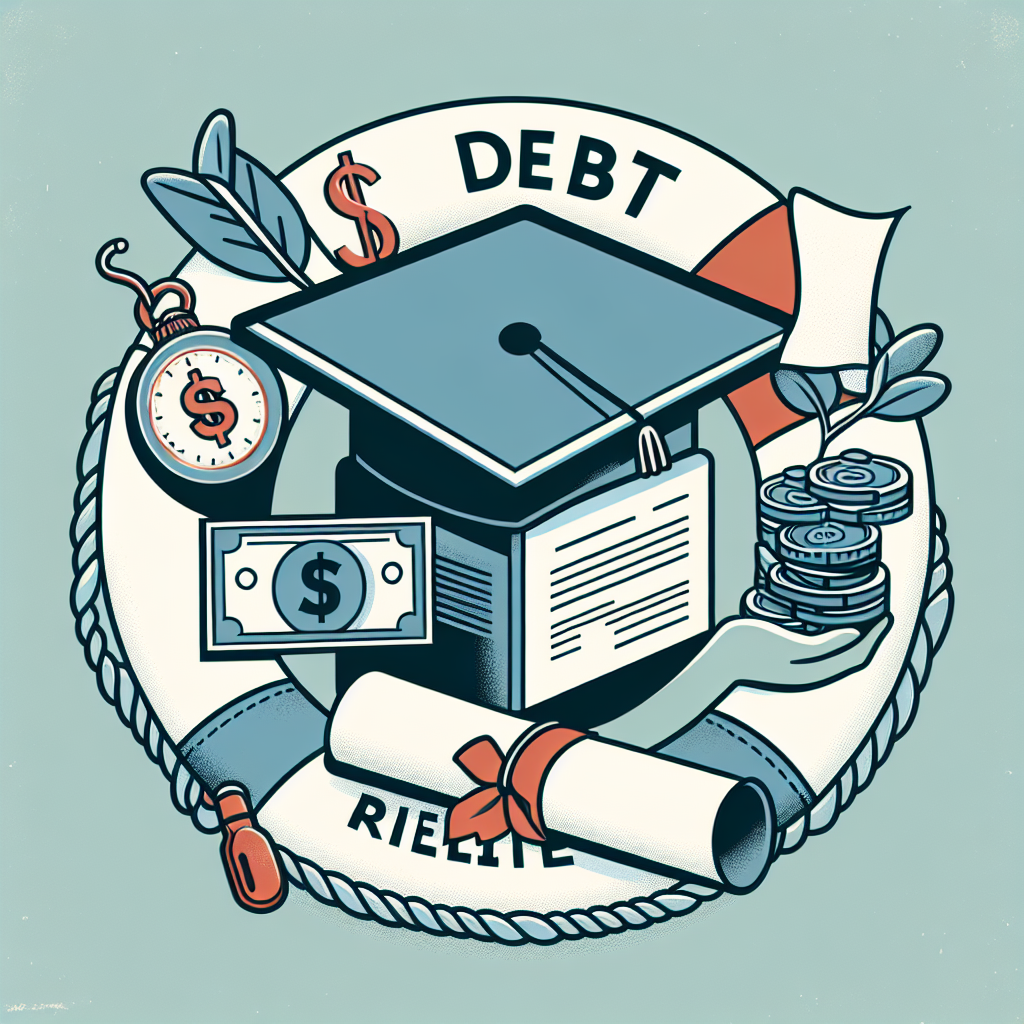The burden of student loans has become a significant concern for many graduates and their families, often affecting financial stability and long-term economic prospects. As this issue continues to grow, individuals are increasingly interested in whether student loans can be included in debt relief programs. This article explores the complexities surrounding student loans, the criteria for debt relief eligibility, the types of programs available, and the potential impact of including student loans in these programs.
Understanding Student Loans and Debt Relief
Student loans are a form of financial aid designed to help students pay for post-secondary education and associated fees, such as tuition, books, and living expenses. Unlike other forms of debt, student loans often come with specific repayment terms, interest rates, and eligibility requirements dictated by the federal government or private lenders. Understanding the nature of these loans is crucial for exploring potential debt relief options.
Debt relief programs, on the other hand, aim to assist individuals in repaying their debts through various strategies, such as loan forgiveness, consolidation, or repayment plans. These programs are designed to alleviate financial burdens by restructuring or reducing debt loads, making it easier for borrowers to manage their financial obligations. Including student loans in these programs can effectively address the debt crisis many graduates face.
While the combination of student loans and debt relief programs seems promising, it is essential to recognize the unique challenges involved. Student loans are often considered essential investments in one’s future, yet they can also become significant obstacles if not managed properly. Therefore, a thorough understanding of both student loans and debt relief programs is necessary for borrowers seeking solutions to their financial difficulties.
Eligibility Criteria for Debt Relief Programs
The eligibility criteria for debt relief programs vary widely, depending on the type of program and the lender involved. For federal student loans, borrowers may need to meet specific financial criteria, such as demonstrating a financial hardship or being employed in a particular public service field. These criteria help determine who can benefit most from debt relief programs, ensuring that assistance is directed toward those in genuine need.
Private student loans often have different eligibility requirements for debt relief options. These may include credit score considerations, employment status, and income levels. Private lenders may also have more stringent criteria, as they are not bound by federal regulations. Understanding these differences is vital for borrowers seeking relief from private student loan debt.
Borrowers should also be aware of potential pitfalls, such as scams or fraudulent organizations posing as debt relief agencies. It is crucial to research and verify the legitimacy of any program or agency offering debt relief. Utilizing trusted sources, such as the Federal Student Aid website, can provide valuable information and guidance in navigating these programs.
Types of Debt Relief Programs Available
Several types of debt relief programs are available to borrowers, each with distinct features and benefits. Federal student loan forgiveness programs, such as Public Service Loan Forgiveness (PSLF) and Teacher Loan Forgiveness, offer relief for borrowers working in qualifying public service or teaching positions. These programs can forgive a portion or all of the borrower’s federal student loan debt after meeting specific service requirements.
Income-driven repayment plans represent another form of debt relief for federal student loan borrowers. These plans adjust monthly payments based on income and family size, often resulting in lower payments and potential loan forgiveness after a set period. Borrowers should carefully review options like Income-Based Repayment (IBR) and Pay As You Earn (PAYE) to determine which plan best suits their financial situation.
For those with private student loans, relief options may be more limited. However, some lenders offer programs like refinancing or consolidation, which can lower interest rates or combine multiple loans into a single payment. Borrowers should consult with their lenders and consider external resources, such as the Consumer Financial Protection Bureau for guidance on navigating these options.
Impact of Including Student Loans in Relief
Including student loans in debt relief programs could profoundly impact individual borrowers and the economy. For graduates struggling with significant student debt, relief programs can provide much-needed financial respite, allowing them to focus on other life goals, such as homeownership or retirement savings. This sense of financial stability can enhance overall well-being and reduce stress related to debt.
At a broader level, incorporating student loans into debt relief initiatives could stimulate economic growth. By reducing the financial burdens of student debt, individuals may have more disposable income to spend on goods, services, and investments, thus boosting economic activity. Furthermore, alleviating student debt can encourage more individuals to pursue higher education, fostering a more educated workforce and driving innovation.
However, challenges remain in implementing widespread student loan debt relief. Policymakers and stakeholders must carefully consider the long-term implications of such programs, balancing the need for immediate relief with the potential impact on future borrowers and the lending system. Engaging in informed discussions and accessing resources like The Institute for College Access & Success can aid in understanding these complex issues.
The inclusion of student loans in debt relief programs represents a critical area of focus for borrowers, policymakers, and educators alike. While challenges and complexities abound, the potential benefits of reducing the burden of student debt are vast. By understanding the nuances of student loans and exploring available relief options, individuals can make informed decisions that support their financial well-being and contribute to a more stable economic future. To learn more about managing student loans and exploring debt relief options, visit our Student Loan Management Guide and Debt Relief Resources Page.
Emergency debt help servicesHow to qualify for a consumer proposalAffordable debt repayment plansRelevant LinkRelevant LinkRelevant Link
